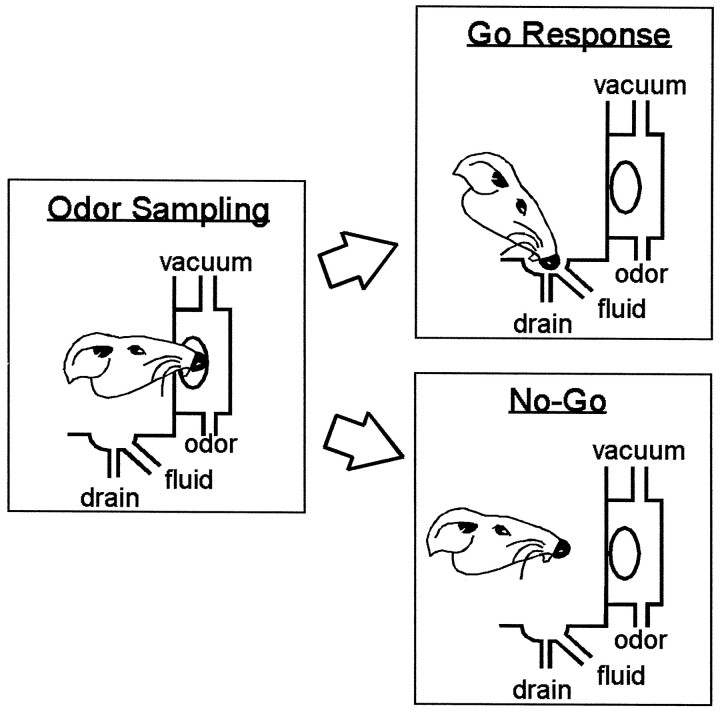Fig. 1.
Schematic drawings illustrate the sequence of behaviors in the go, no-go olfactory discrimination task. In this task, a water-deprived rat had to sample an odor presented at a port on each trial (odor sampling) to decide whether to respond (go response) at a nearby fluid well. Responses at both the odor port and the fluid well were registered by interruption of photo beams that detected entry of the rat’s snout into each port. A go response resulted in delivery of a rewarding sucrose solution, after presentation of a “positive” odor, or an aversive quinine solution, after presentation of a “negative” odor. A go response after a negative odor was considered an error and followed by a prolonged intertrial interval (9 vs 4 sec after a correct response). Novel odors were presented in each session; thus the animal had to learn new associations each day. The rat would begin each session by responding on every trial, irrespective of whether a positive or a negative odor was presented. Learning was evident when the rat began to withhold responses (no-go) after sampling of the negative odor to avoid quinine delivery. This shift in the rat’s behavior generally began after 15–30 trials. Stable, highly accurate performance was generally achieved after 60–100 trials, reaching a behavioral criterion defined as 90% accurate performance over a moving block of 20 trials. During postcriterion performance the rat would make very few errors.

